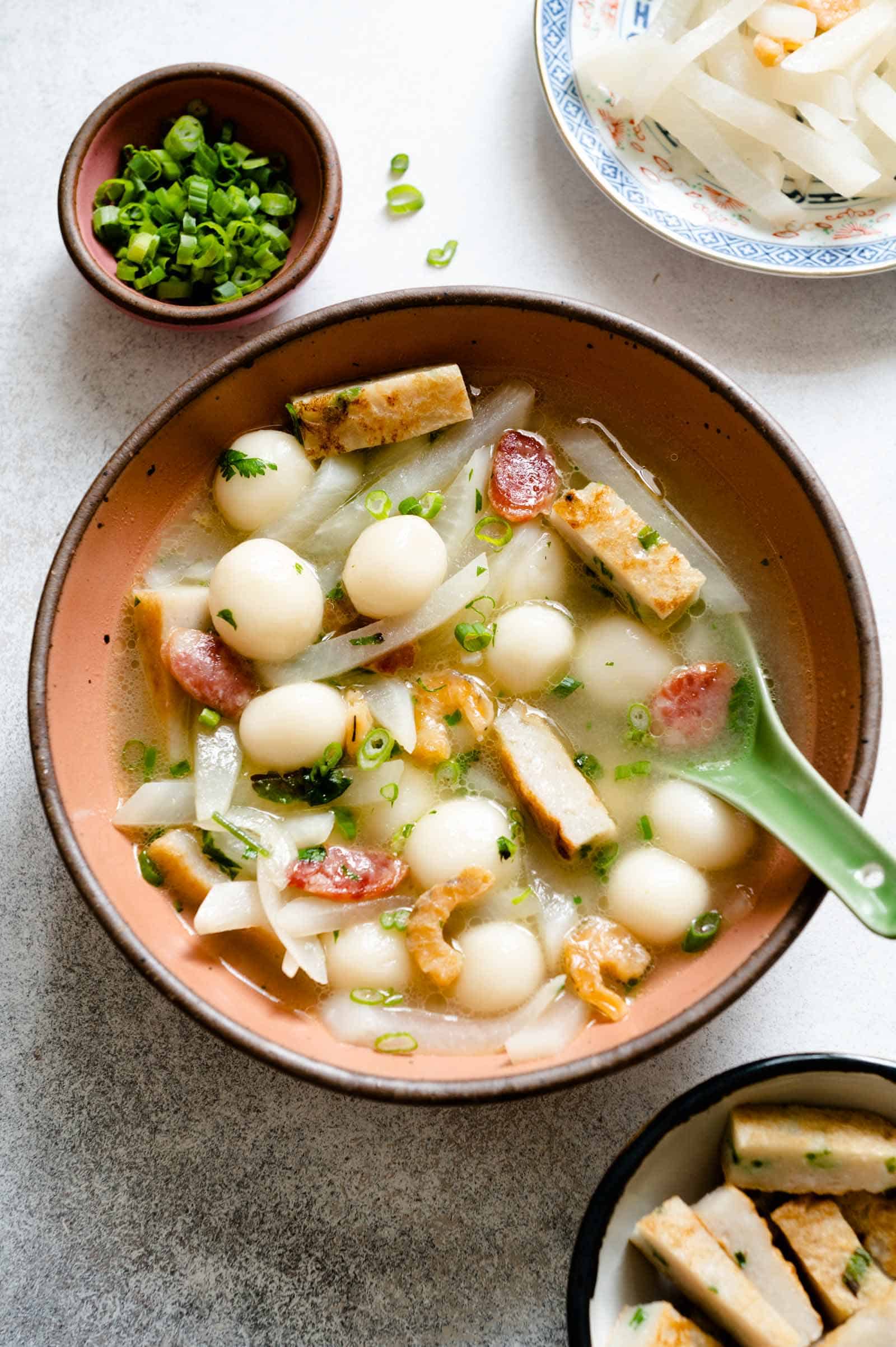
Many of us consider the winter solstice just the shortest day of the year, but it is a very important festival in Chinese culture. Dongzhi (冬至), which literally means “the extreme of winter”, has its theoretical basis in the concept of yin yang (陰陽 / 阴阳). It’s both a celebration of the shortest day of the year and the return of longer daylight in the weeks ahead. Note that dong zhi is the Mandarin pronunciation; in Cantonese it is dong zee.
During the winter solstice, families gather to prepare and eat tang yuan (湯圓/汤圆) for dongzhi. (Tang Yuan, as it is most commonly written in English, is based on Mandarin pronunciation; in Cantonese it is tong jon.) Tang yuan are small round dumplings made from sticky rice flour and water. The round shape of the dumplings symbolizes family gatherings (or tuanyuan, 團圓 / 团圆). Some families make the sweet version of Tang Yuan. However, in Toisan (台山), where my family is from, people often cook tang yuan in a hearty broth with seafood, vegetables and meat.
Mama Lin usually prepares a broth flavored with chicken broth, dried shrimp, Chinese sausage, shallots/onions, and sometimes lean pork. To serve, she tops the Tang Yuan bowl with boiled radish, fried fishcake, scallions, and cilantro. It’s the ultimate comfort food for winter!
By the way, most of the traditional Chinese holidays are based on the lunar calendar. As a result, Chinese winter solstice celebrations may occur on the same day or a day later than the winter solstice, based on the Gregorian calendar.
HEAVY TANG YUAN COOKING NOTES
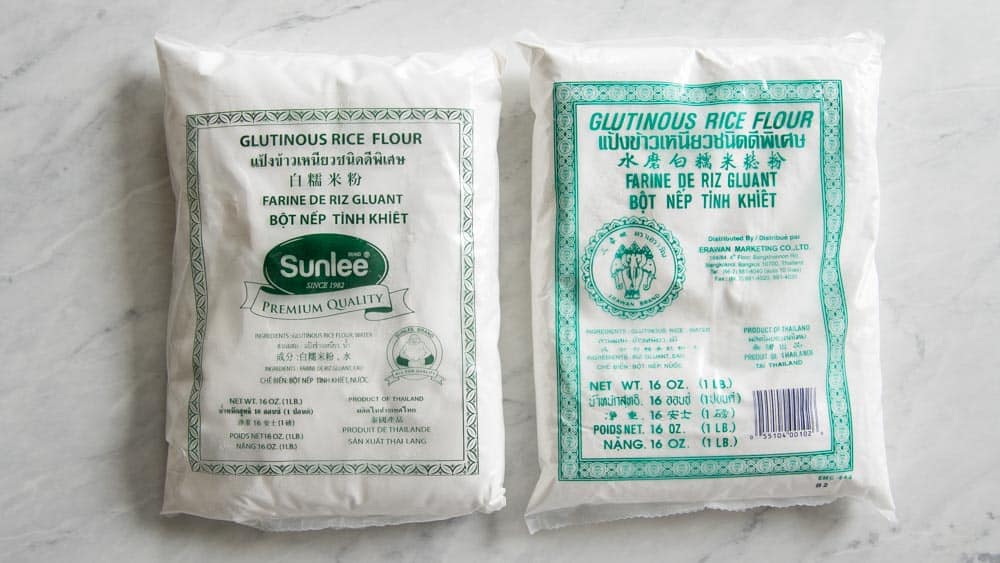
USE OF glutinous rice flour
To make tang yuan You must use glutinous rice flour. My mom usually uses Erawan brand (from Thailand) glutinous rice flour, which comes in clear plastic bags with a green label. You can find the flour in Asian stores or on Amazon.
Do not use regular rice flour, as the rice balls will not become tough. If glutinous rice flour is hard for you to find, you can try sweet rice flour (e.g. mochiko). Note that sweet rice flour/mochiko tends to be ground coarser compared to Thai-style glutinous rice flour, so the rice balls aren’t as silky soft.
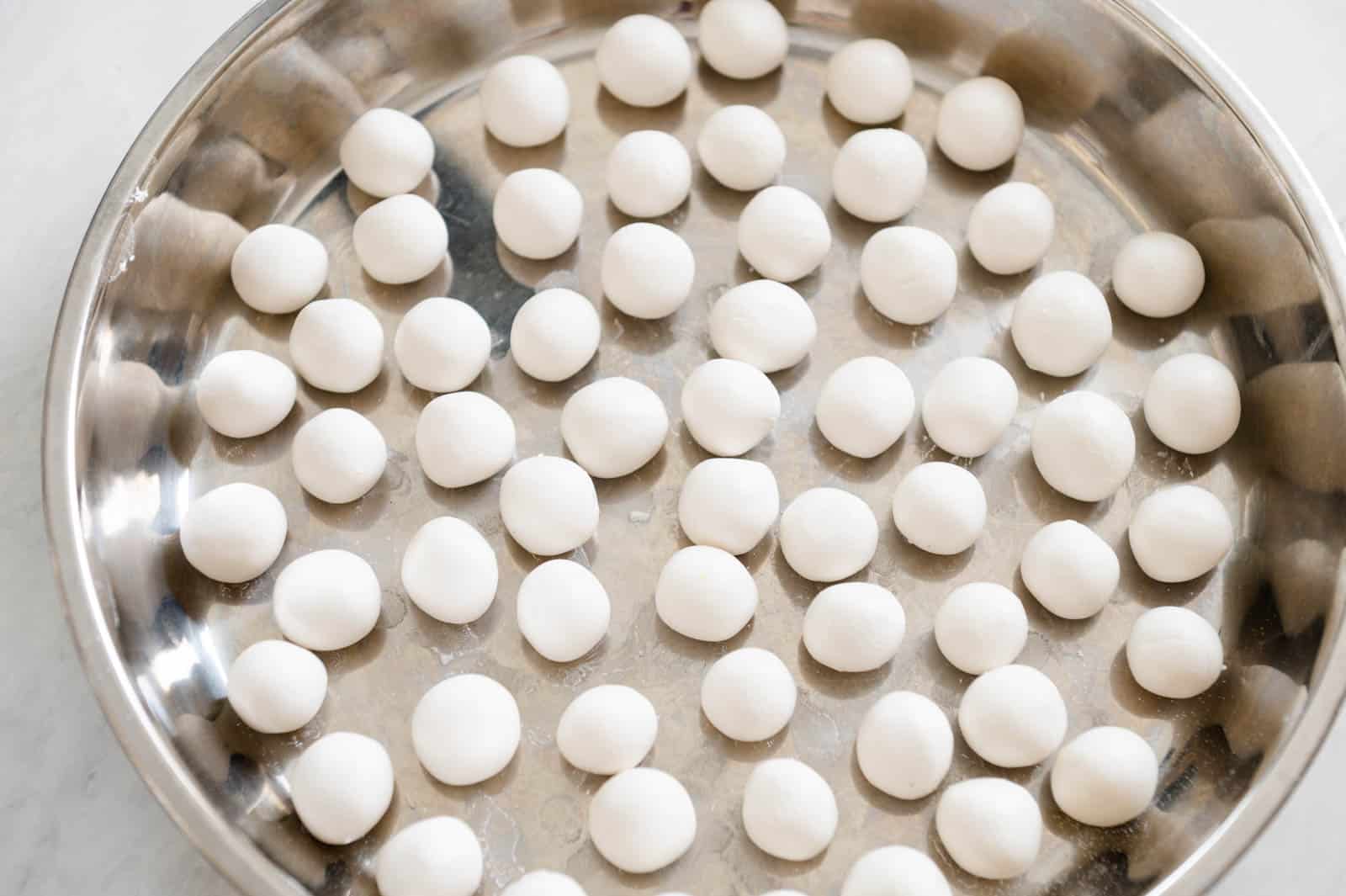
PREPARING TANG YUAN Dough WITH ROOM TEMPERATURE WATER
When Mama Lin started learning how to cook tang yuan, she used boiling hot water to prepare the dough. Hot water turns sticky rice flour into a very stretchy, pliable dough. If you ever make tang yuan with filling, you’ll need to prepare the dough with hot water so you can easily manipulate the dough around the filling.
Because this kind of savory tang yuan has no filling, you don’t need to prepare the dough with hot boiling water. For the past decade my mom has used room temperature water to make the dough because it’s much easier to work with. This “cold dough,” as my mom calls it, is much easier to knead and the dough doesn’t stick to your hands when rolled into balls. After boiling, the texture of tang yuan made with hot or cold water is about the same.
The downside of cold water batter is that the raw rice balls can stick to each other or the plate they’re sitting on. When you roll out the balls and place them on a plate, make sure the balls don’t touch each other. When you’re ready to add the rice balls to the broth, turn the plate over and gently brush them. You’ll see a small piece of dough sticking to the plate, but don’t stress. Mama Lin, always the resourceful one, scrapes and collects the dough to make one last tang yuan.
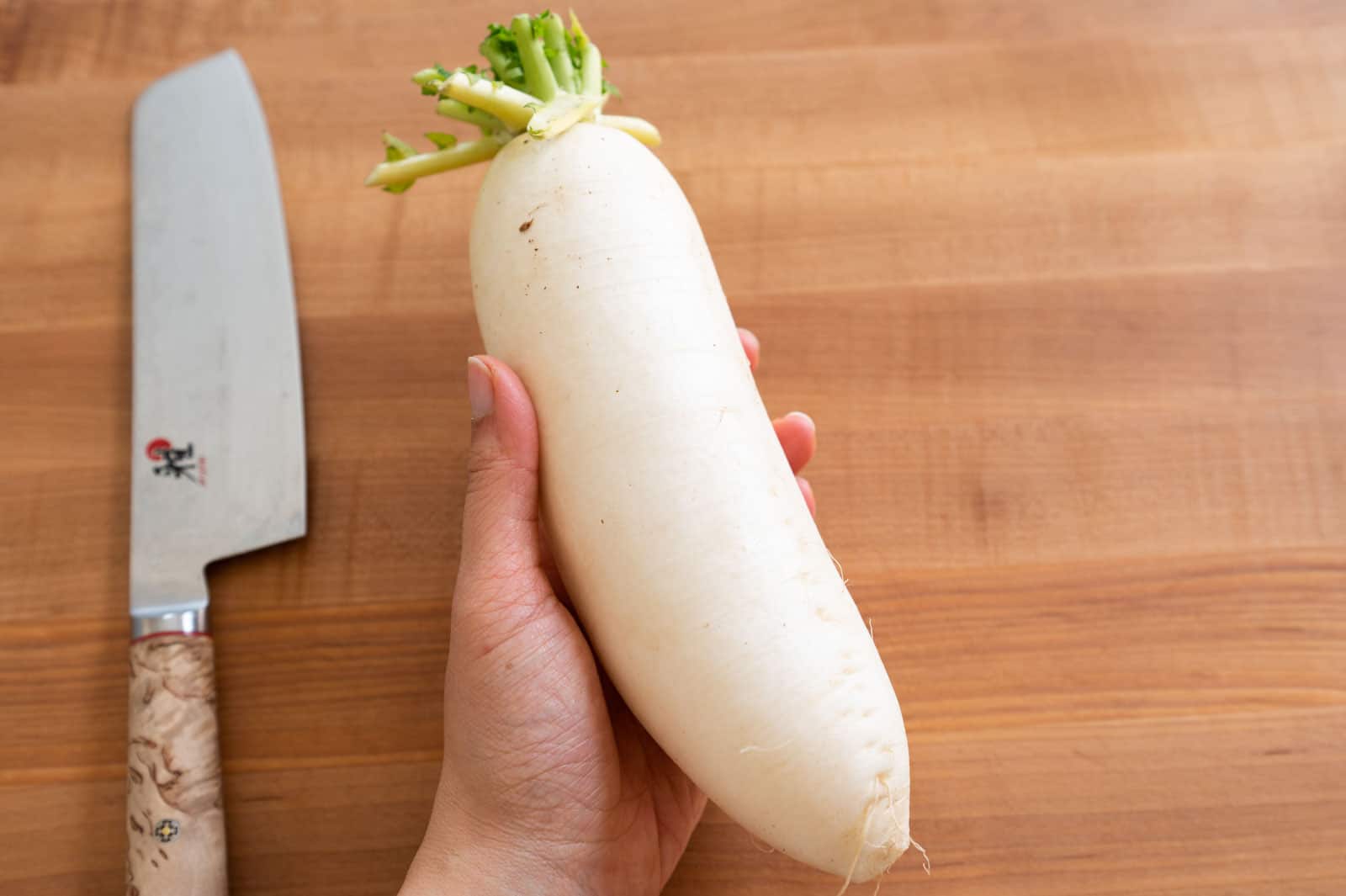
COOKING THE DAIKON
A key element of Mama Lin’s savory tang yuan is daikon (which we call 蘿蔔/萝卜, lo bak in Cantonese). Mama Lin prefers to use what she calls “Chinese daikon,” which is long and thick, over “Japanese daikon,” which is long and thin. She claims that the Japanese style of daikon is more bitter, although I can’t say I’ve noticed much of a difference.
To cook the daikon, she cooks it with dried shrimp for umami flavor, as well as a small piece of rock candy (冰糖, Bing Tang). The sugar helps balance the slightly bitter flavors of daikon. Rock candy can be hard to find, so consider replacing it with 2 teaspoons of sugar.
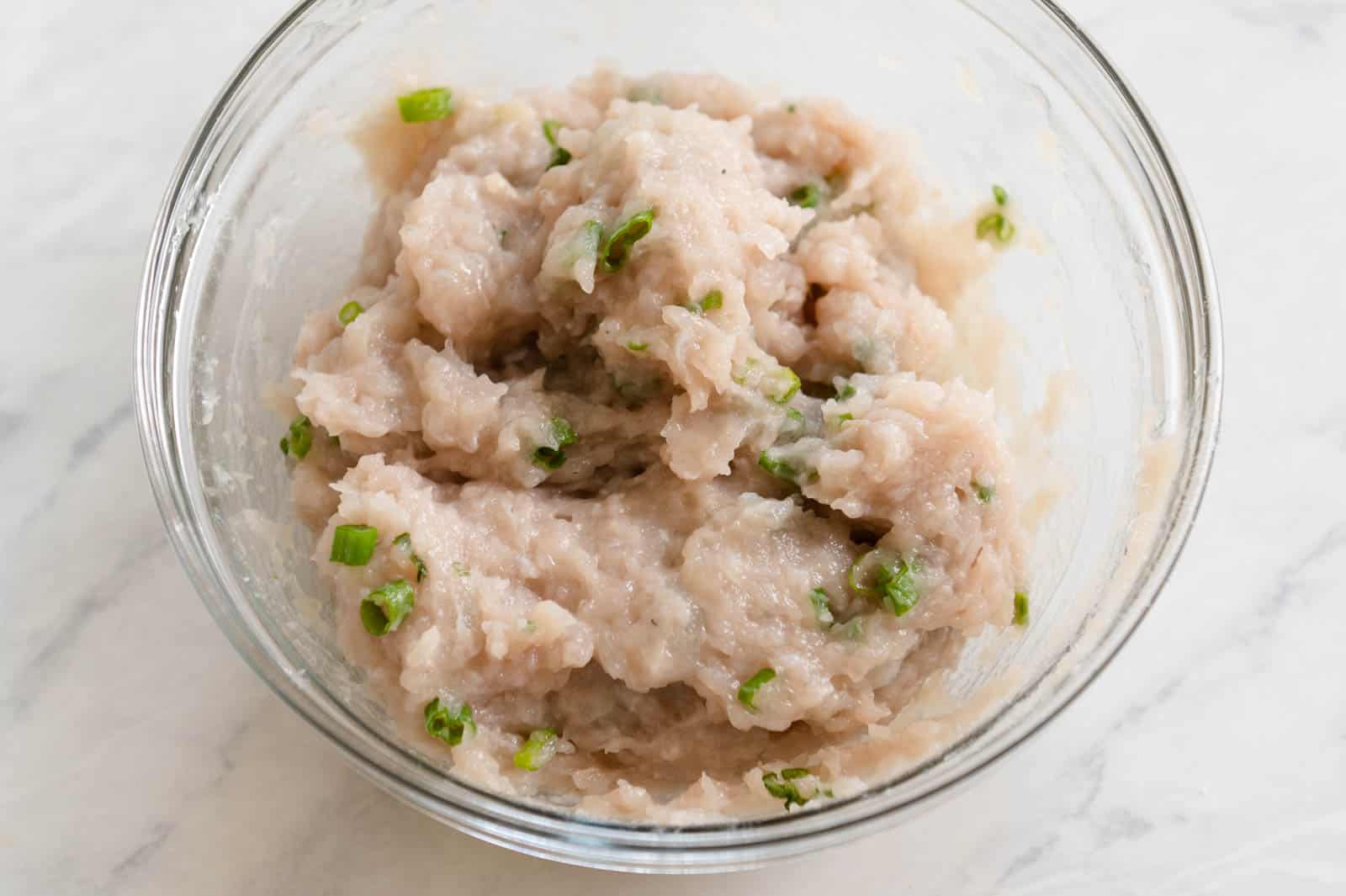
FISH PASTE
My mother always buys fish paste from a fishmonger in Chinatown or Asian supermarkets. In Sacramento I was able to find some at the 99 Ranch Market. I like to add scallions to the fish paste for extra flavor. If fish paste is hard to find, you can substitute fish balls (available in frozen sections of Asian grocery stores) or Japanese-style fried fish cakes (also available in Asian grocery stores).
CAN YOU ADVANCE THE TANG YUAN?
Yes! Line a large plate with a sheet of parchment paper. Then arrange the uncooked tang yuan on the laid out plate, making sure the balls don’t touch. Once hardened, transfer the tang yuan to a freezer bag or container. I recommend thawing the tang yuan before cooking.
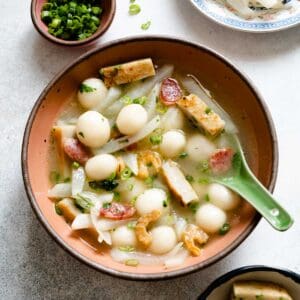
PRINT EMAIL PIN
Servings: 4
Spicy Tang Yuan (鹹湯圓)
ingredients
daikon
- 1 Middle Daikon (about 550 to 600 grams), peeled off
- 1 1/2 tablespoon oil, any neutral oil such as vegetable, sunflower, etc.
- 3 cloves garlic, smash
- 1/4 Cup (15 g) dried shrimp, flushed
- 1 1/4 cups (295 mL) water
- 1 small piece of rock candy (about 8 grams), or 2 teaspoons of granulated sugar
- 1/2 teaspoon Diamond Crystal Kosher Salt, or 1/4 teaspoon sea salt
fishcake
- 1 lb (454 g) fish paste, from Asian grocery stores (see note 1)
- 3 tablespoon sliced spring onions, Optional
- Oil for frying fish cakes in a pan
Soup
- 2 tablespoon oil, any neutral oil such as vegetable, canola, sunflower, etc.
- 1 big shallot, thinly sliced (about 3/4 cup)
- 2 Left of Chinese Sausages, cut
- 3 cups (710 mL) chicken broth, I used a Better Than Bouillon low-sodium soup base
- 1/2 teaspoon Diamond Crystal Kosher Salt, or 1/4 teaspoon sea salt, plus more to taste
- 3 tablespoon sliced spring onions
- 2 tablespoon chopped coriander
instructions
Make sticky rice balls
Cook Daikon
-
Cut off the green tips from the radish. Cut the radish into 1/4 to 1/2 inch thick slices. Then stack the radish slices and cut into strips (about 1/4 inch wide).
-
Heat a large wok (or saucepan) with 1 1/2 tablespoons oil over high heat. Add the garlic and sauté for about 30 seconds to 1 minute. Add the dried shrimp and cook an additional 30 seconds to 1 minute. Next add the daikon and 1 1/4 cups of water. Add the sugar and cover the wok with a lid and bring the water to a boil. After boiling, reduce the heat slightly and simmer the daikon for 6 to 8 minutes until tender.
-
Cover the wok and season with salt. (See Note 2) Transfer the daikon and all the liquid to a bowl.
Remarks
- You can find fresh or frozen fish paste at Asian supermarkets. In Sacramento, I could find fresh paste at the 99 Ranch Market. I like to add scallions to the fish paste for extra flavor. If fish paste is hard to find, you can substitute fish balls (available in frozen sections of Asian grocery stores) or Japanese-style fried fish cakes (also available in Asian grocery stores).
- My mother says that salting too early makes the radish slightly bitter.
- Freeze directions: Line a large plate with a sheet of parchment paper. Then arrange the uncooked tang yuan on the laid out plate, making sure the balls don’t touch. Once hardened, transfer the tang yuan to a freezer bag or container. I recommend thawing the tang yuan before cooking.
nutrition
Portion: 1serve | Calories: 639kcal | Carbohydrates: 65.8G | Protein: 36.6G | Fat: 26.2G | Saturated Fatty Acids: 4.7G | Cholesterol: 84mg | Sodium: 1281mg | Fiber: 4.8G | Sugar: 7.2G

